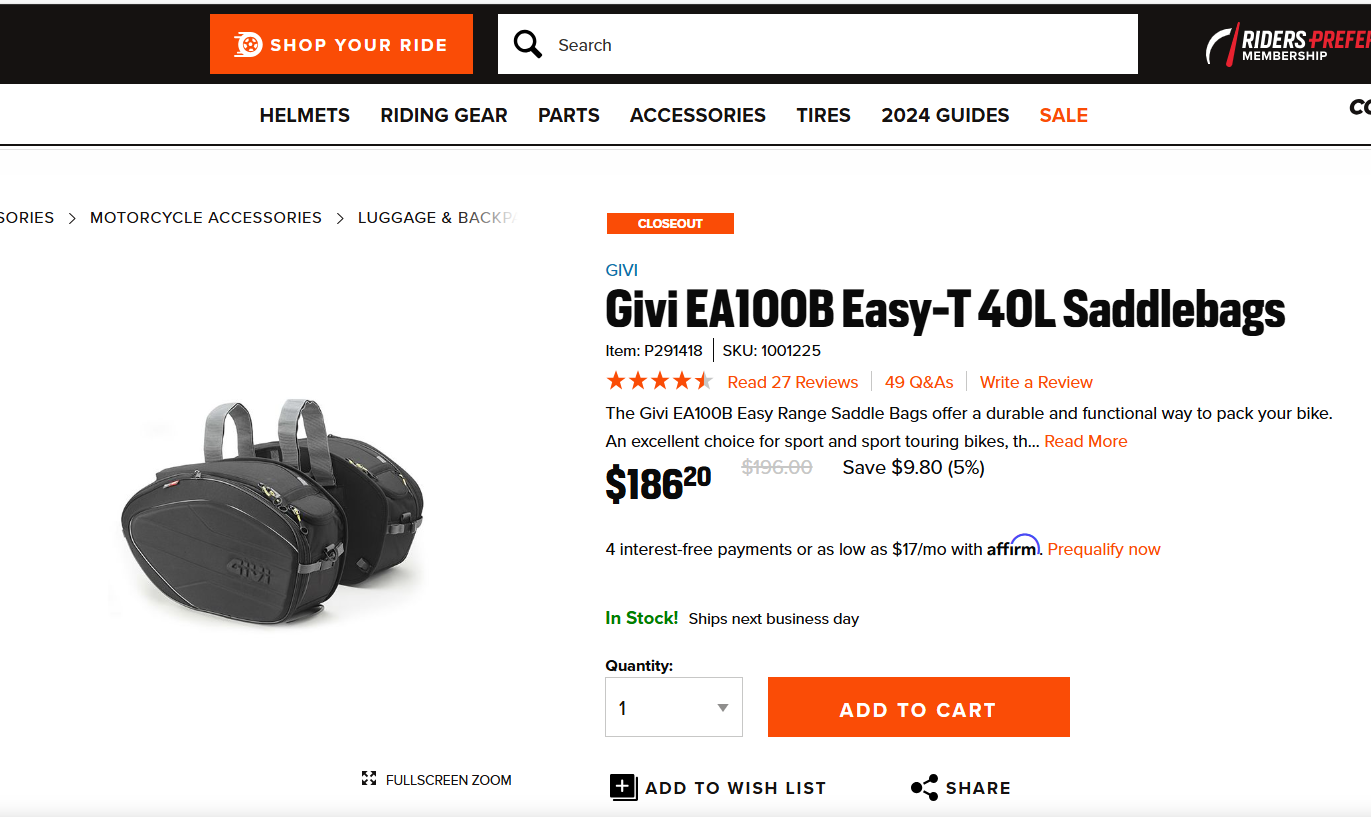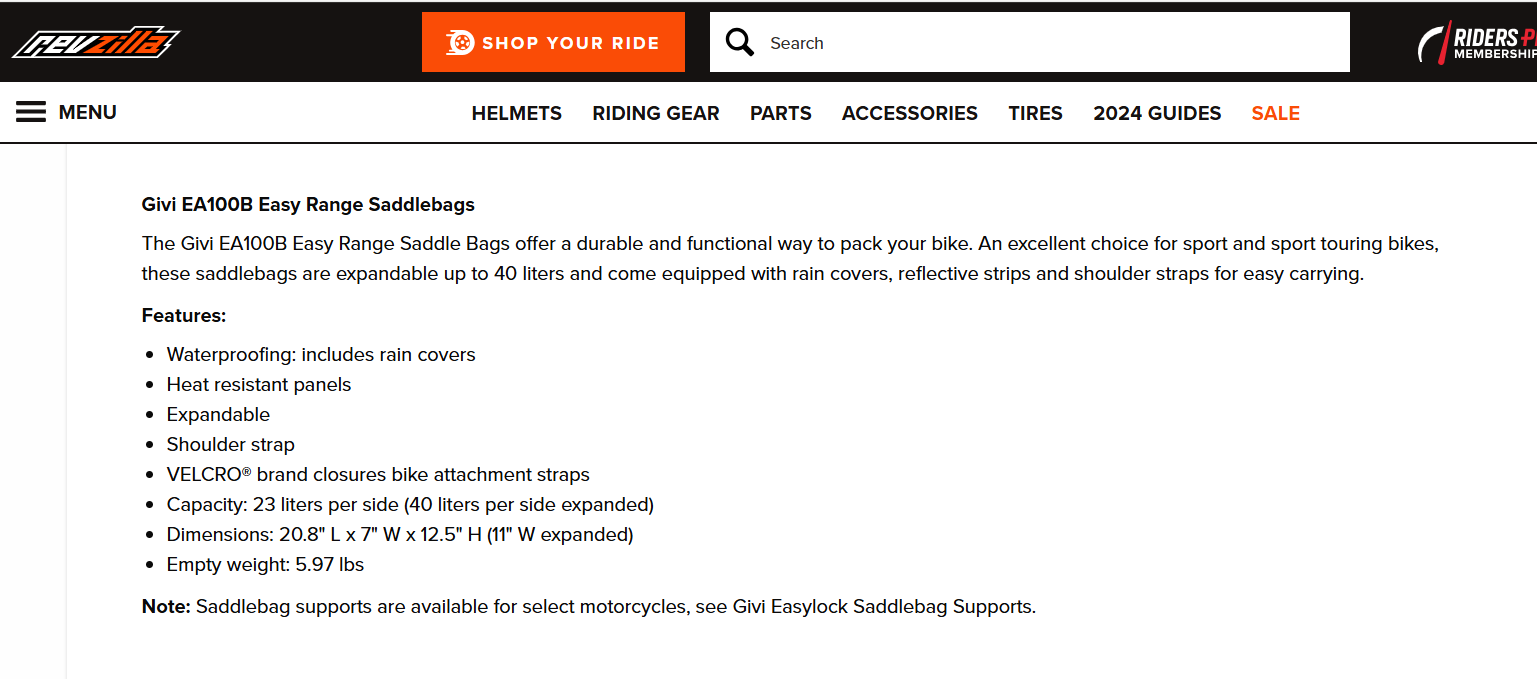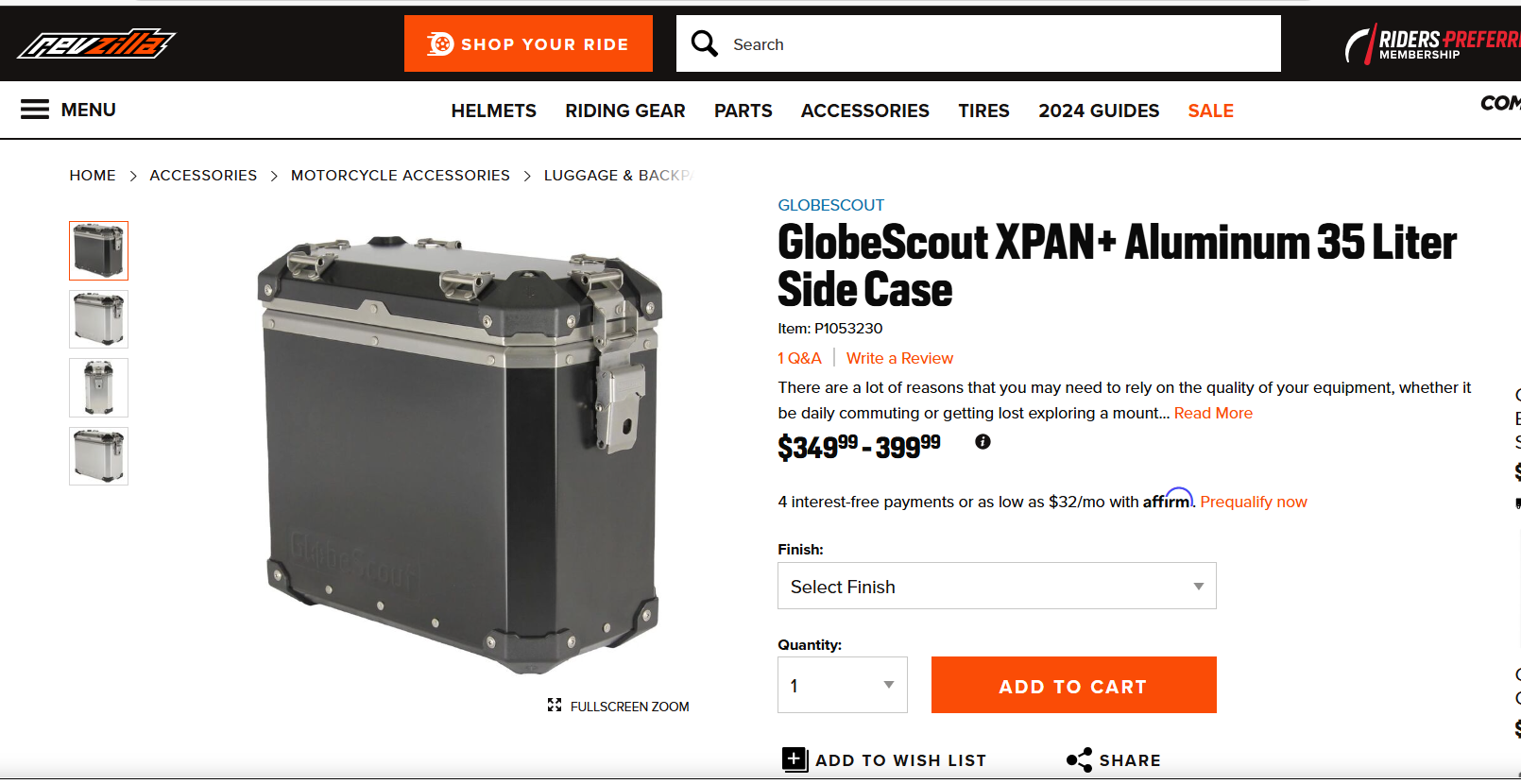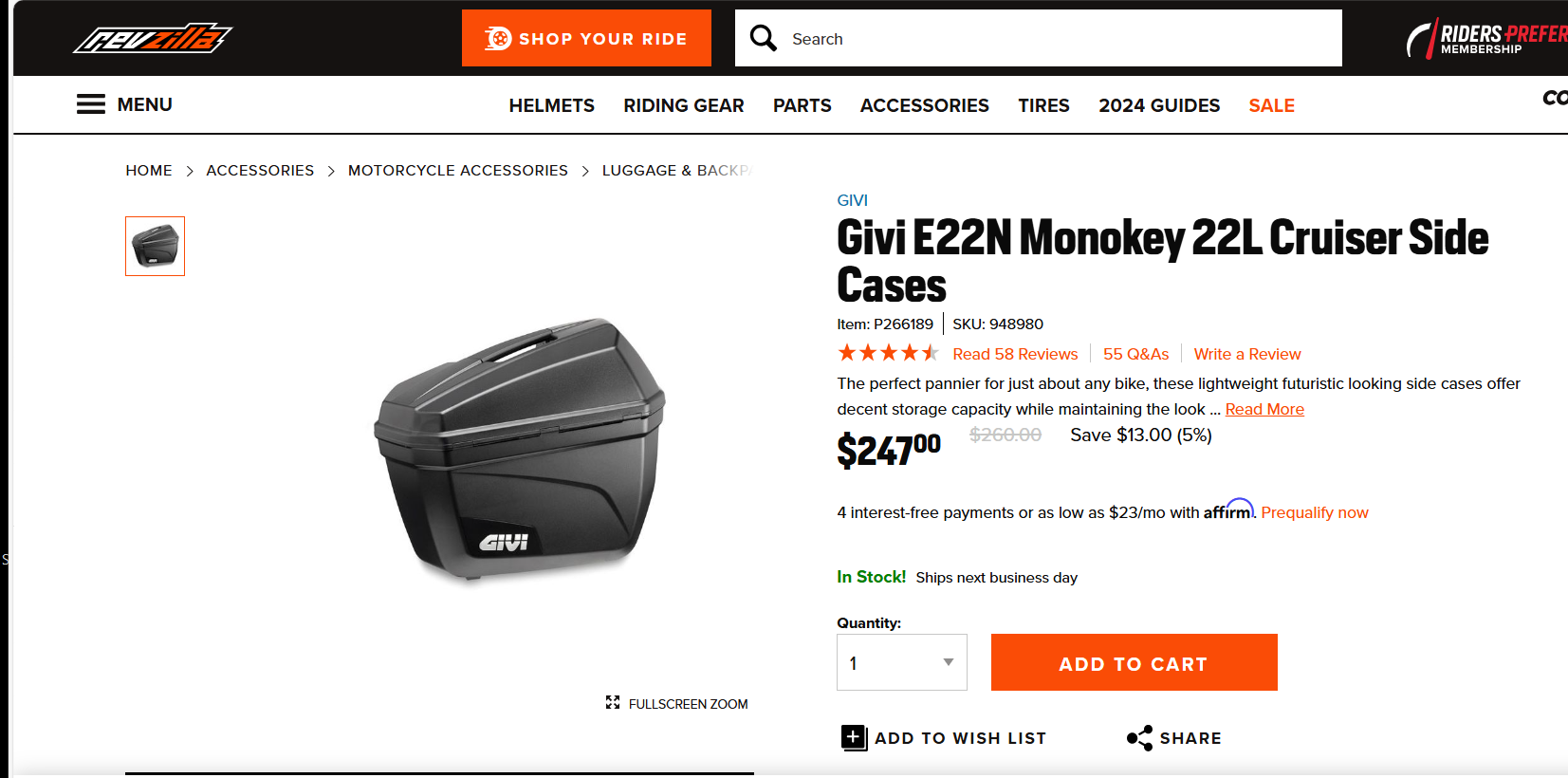You’ve decided that you want to start doing some overnight or longer trips on your sport or adventure bike and realize that you’ll need some way to carry a change of clothes at the very least. But your bike didn’t come with any bags. What now? What luggage do I get? Soft bags? Hard bags? Or something different?
There is a lot that goes into choosing the right luggage for YOU. What works for someone else might not work for you, and vice versa. The first step is to figure out what kind of riding will you be doing and for how long. Will you be doing all road riding, all adventure/off-road riding? Or a combination of both? Will you be taking off for an overnight? A long weekend? A week or two? Around the world? Will you be camping or staying in hotels? Just yourself or two-up? How important is security to you? How important is it for the luggage to be rain proof? What about the cost? Many sport-touring and adventure type bikes come with factory hard bags, but certainly not all of them. And that factory stuff raises the price of the initial bike purchase, generally even if it is a used bike.
Let’s take a look:
Soft Luggage
Soft luggage is cheap, easy to attach and take off, is a safer bet when doing off-road/adventure riding, and can be easily moved from bike to bike. However, it is not as secure as hard bags and lacks the waterproofing that most hard bags have. Soft gear is typically much less expensive than hard gear and is generally less of a financial commitment. I went to the Revzilla site and looked at some Givi saddlebags for comparison purposes.

These are a mid-priced and mid-sized set of panier bags. Givi is a top-quality manufacturer of motorcycle pages. They are more well known for their hard bags, than their soft bags, and you will see more aftermarket hard bags from Givi than any other company that I know off. They also make many of the OEM bags for the different motorcycle companies. They are standard at 23 liters per side but can be expanded to 40 liters per side. A total of 80 liters, more than most people will need for almost any trip.

These soft bags come with rain covers that will work well in most conditions. However, they certainly are not completely waterproof. One way to solve that problem is to put your gear into plastic bags before you put the gear into the saddlebags. This is especially important for your electronic devices.
One other advantage of soft gear is that it is lighter in weight than hard cases. If you’re on a larger touring bike that probably won’t make much of a difference. However, on a lightweight adventure bike it may be a noticeable difference.
How the bags open is also something to consider. If you look at these Givi soft bags closely you should notice that they have dual zippers along the top of the bags. opening those up makes for easy loading and unloading of the contents. it is quite easy to unzip a bag and reach in to get one item out without worrying about everything falling out when you do that. In comparison, most hard side bags open sideways.
The main con to soft luggage is security. There are options in the market that claim to be slash proof, but I’ve never seen or tested them myself. I can’t really say how they work. But something to remember is that if a thief wants your stuff bad enough, they will find a way to get it no matter what you do. Still, it must be acknowledged that if a bag is easy for you to take off a bike, it will also be easy for a thief to do the same. Some soft and/or semi-rigid bags to mount to framework that is made as a direct fit for your bike, and which the bags can be locked too. But that also takes away some of the versatility of soft bags by not allowing you to move them from bike to bike, also adds to the cost because they need mounting brackets, and generally are not as expandable as true soft bags.
One more thing to consider if you are planning on riding more adventure type rides is the safety of a soft bag compared to hard cases, in case of a crash. Generally speaking, the hard bags are move of a threat to the rider in that they have no give. If your foot is caught between the ground and the bag, you are probably going to come out worse if that is a hard bag. However, hard bags can also at times protect your bike from getting damaged as they will take the brunt of the force and somewhat protect your bike. But what if that causes the mounting brackets to break? What then? Soft bags will have some give in them and may easily just bounce back with little or no damage. Hard bags will sometimes just have some scratches and will continue to work just fine. There is no absolute winner here as it all depends on the extent of the crash.
To sum up the pros and cons of soft bags:
Pros
* Inexpensive
* Easily detachable
* Possibly safer in a crash
Cons
* Easy to break into or steal
* Not as waterproof
* May shift while you ride
* Some say they don’t look good
Hard Luggage
Hard luggage is typically made of aluminum or hard plastic. It is often waterproof and secure. it can safely hold delicate electronics securely, although there may be more vibration on rough roads. It may be able to hold more than the soft bags and/or accommodate larger items more easily. They are generally more stable than soft bags. One of the best things about many hard bags is that they are versatile. They can serve as simple luggage carriers but can also be used as a cooler, a stool to sit on, and even a secure place to store food if you’re camping. They offer a lower chance of break-ins and theft. Lastly, especially if we are talking OEM hard bags, they genenerally look better as they are designed to complment the lines of a bike. Square, shiny aluminum, OEM side cases would be considered an exception to that rule by many.


As you can see from these two examples, there are different types and sizes of hard side cases available in the aftermarket. Some are larger, smaller, sleeker, less expensive or more expensive, than others. The OEM side cases for my Kawasaki are even more expensive but are also color coded for my bike and are easily attachable and removable with a single key.

This is typical for most factory installed hard bags from any brand of motorcycle.
The most significant negative factor of hard luggage is the cost. Not only are the bags expensive, but the mounting systems for aftermarket bags alone can easily cost more than a complete set of soft bags. The next biggest consideration is the safety in case of a crash, especially for adventure type riders. The other thing to consider, especially if you have multiple bikes, is the lack of ability to move the bags from bike to bike. Unless you have the mounts on the other bikes, you won’t easily move them. Weight and size is another consideration. Generally speaking, hard luggage is heavier and wider than soft luggage and that may be a concern to you if you do a lot of urban riding or are concerned about the weight of your bike.
The Verdict: Soft vs Hard?
Obviously, the choice is yours. Maybe even a mix of both with soft side bags and a hard trunk. Or hard side bags and a soft tank bag. You need to look at what kind of traveling you are going to do and how much you can afford. I have found that I prefer hard bags for myself. My hard bags have form fitting soft liners that I can use for my clothes. That way I carry my clothes into the hotel room while still leaving my side bags locked on the bike and holding such things as a rain suit or extra pair of gloves. But I still have a 3-piece soft luggage set (side bags and top bag that clip together) that I will always keep in reserve. They are stored in my shop and don’t take up much room. I’ve had them for several years now and they have held up great. Can’t beat the price and versatility either!
